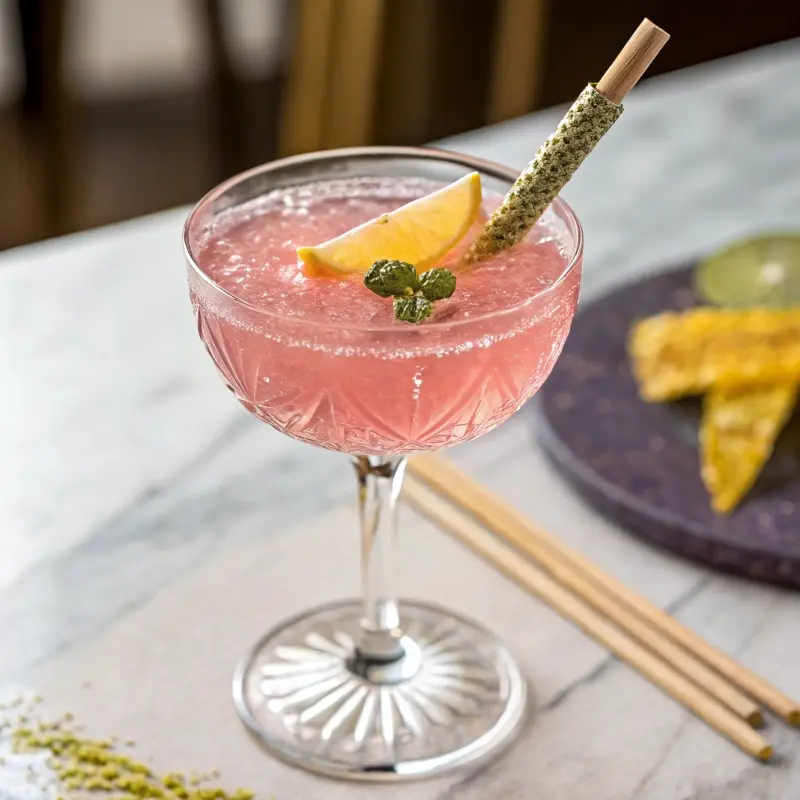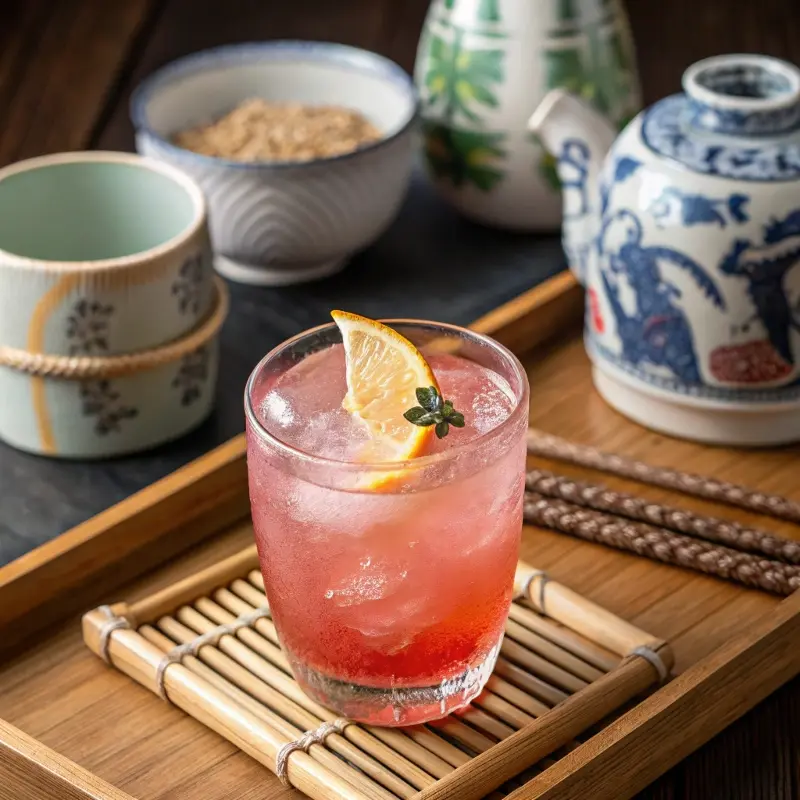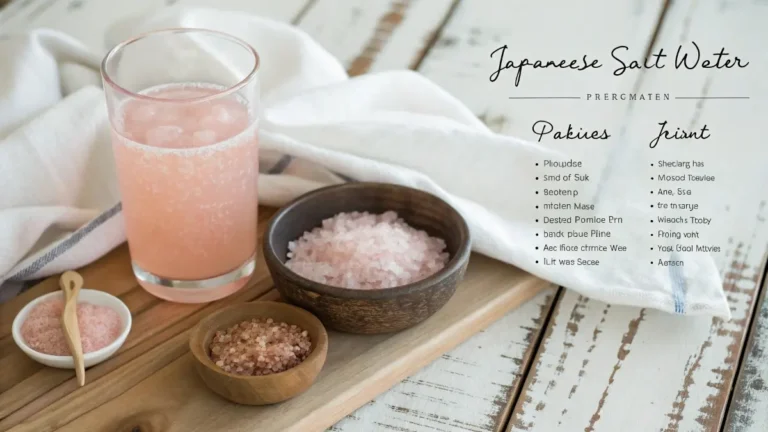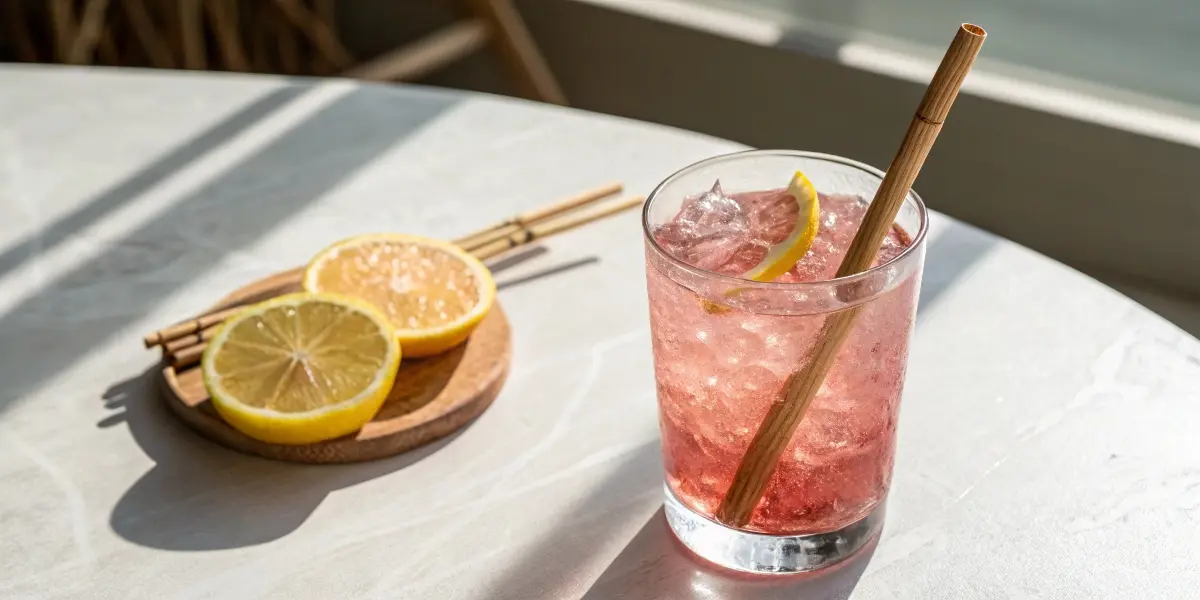It’s hard not to notice the explosion of interest in “Japanese pink salt recipes” on TikTok, YouTube, and wellness blogs in 2025. As someone who grew up in a health-focused home, I’m always skeptical about viral shortcuts—but when my mom’s doctor recommended gentler ways to support her metabolism, we began to experiment with mineral-rich salt blends. Today, “Japanese pink salt recipe” gets searched by thousands who want a clean, simple way to hydrate or support weight goals. According to a July 2025 Mintel food trends report, over 30% of Americans now try at least one “functional” drink per week, and pink salt-based recipes are among the fastest-rising choices
But what is the Japanese pink salt trick, and does it really work? In this guide, I’ll break down what’s in these trendy blends, show you a real 4-ingredient pink salt recipe, and answer top questions about safety, science, and results. We’ll also see how the Japanese approach to mindful eating can make any healthy habit more sustainable—no “miracle cure” required.
Table of Contents
What Is the 4 Ingredient Japanese Pink Salt Trick?
Ingredients and Origins of the Japanese Pink Salt Recipe
The “Japanese pink salt trick” isn’t actually a centuries-old tradition—but it’s inspired by the minimalist, mindful approach of Japanese wellness culture. Most viral recipes blend just four ingredients: Himalayan pink salt (not table salt), fresh lemon juice, filtered water, and a touch of honey or sometimes apple cider vinegar. The idea is to combine gentle mineral support (from the pink salt), vitamin C (from lemon), and a bit of natural sweetness, creating a daily ritual that’s both hydrating and satisfying. Some versions use Japanese yuzu instead of lemon for extra fragrance, but the base stays the same.
Why Is It Called “Japanese”?
Many social media influencers add “Japanese” to recipe names because of the country’s reputation for healthy longevity and simple, beautiful food. While the core pink salt weight loss recipe isn’t traditional, the emphasis on mindful sipping, small daily rituals, and natural ingredients does echo authentic Japanese wellness habits. If you want to compare with other popular drinks, check out our Brazilian Ginger Drink or explore Himalayan Salt Electrolytes for a different spin on mineral-rich hydration.
[IMAGE: Glass of Japanese pink salt drink, garnished with lemon and yuzu, on a clean white table]
How to Make the Japanese Pink Salt Recipe
Classic Preparation (Step-by-Step)
Ready to try the Japanese pink salt recipe at home? Here’s the step-by-step for the classic 4-ingredient version you’ll find trending on social media. The method is simple, fast, and can be adjusted for taste or dietary needs:
- 1/4 teaspoon Himalayan pink salt (or Japanese sea salt, if available)
- 1 to 2 cups filtered water (room temperature or cold)
- Juice of 1/2 lemon (or 1 Japanese yuzu, if you find it)
- 1 teaspoon raw honey (or maple syrup for a vegan option)
- Pour the pink salt into a clean glass.
- Add the lemon or yuzu juice, making sure to catch any seeds.
- Add filtered water and stir until the salt dissolves.
- Mix in honey or your preferred sweetener.
- Stir well and enjoy right away, preferably before breakfast or as a midday hydration boost.
Tip: For a Japanese-inspired twist, add a thin slice of ginger or a splash of yuzu juice for fragrance. If you’re watching sugar, skip the honey and add more citrus instead. For more detailed prep inspiration, explore our Pink Salt Recipe for Weight Loss guide, which breaks down more variations and storage tips.

Popular Variations & Mindful Rituals
Japanese pink salt recipes are popular because they’re so customizable. You can infuse the water with sliced cucumber or mint, or swap lemon for Japanese citrus like sudachi or kabosu for authentic aroma. Some wellness fans enjoy the drink warm on cool mornings, while others pour it over ice as a summer refresher. The most important thing? Sip slowly, breathe deep, and use the ritual to check in with your body. In the spirit of Japanese mindful eating, take a pause to appreciate every element—color, aroma, and flavor.
Looking for more healthy prep ideas? Try Easy Chicken Pot Pie Meal Prep or browse our Egg Bite Variations Recipe for more nourishing, make-ahead recipes.

Does the Japanese Pink Salt Trick Actually Work?
What the Science Really Says
Many people hope that the Japanese pink salt recipe is a secret shortcut for weight loss or boosted energy. The truth? No drink—pink salt included—will burn fat on its own. However, Himalayan and Japanese sea salts do provide trace minerals and natural electrolytes that can help maintain hydration, especially if you’re drinking more water and eating less processed food. Some small studies show that adding minerals and lemon to water may help reduce sugar cravings and support better hydration (PubMed). But sustainable results come from your whole routine: balanced meals, mindful snacking, movement, and enough rest.
Japanese health culture is built on these principles—never “miracle cures.” If you enjoy your pink salt drink as part of a daily ritual, it may help you stick to healthy habits and stay motivated. Just remember: moderation is key, and too much salt (even pink or Japanese) is never healthy for most people.
Potential Benefits and Sensible Tips
The Japanese pink salt recipe is popular because it encourages hydration and mindful eating. By swapping out soda or high-sugar drinks for this mineral blend, you may naturally cut empty calories and improve how you feel. Many fans also find the gentle flavors help with digestion or curb cravings, but be cautious if you have blood pressure or kidney concerns—consult your doctor before adding extra salt to your diet. For more info on balancing minerals and electrolytes, read our Himalayan Salt Electrolytes guide.

FAQs – Japanese Pink Salt Recipe
What is the 4 ingredient pink salt trick?
It’s a drink made from Himalayan (or Japanese) pink salt, lemon or yuzu juice, filtered water, and honey or maple syrup. It’s meant to hydrate, support minerals, and be enjoyed mindfully.
What is the pink salt trick for weight loss recipe?
The classic recipe is 1/4 teaspoon pink salt, juice of 1/2 lemon or yuzu, 1–2 cups water, and a touch of honey. Drink slowly, preferably before meals, to stay hydrated and satisfied.
What is the Japanese pink salt trick?
It refers to using Japanese sea salt or Himalayan pink salt in a daily ritual drink, inspired by Japan’s tradition of mindful hydration. Sometimes, Japanese citrus like yuzu is included for authentic flavor.
Does the pink salt trick actually work?
Pink salt drinks can support hydration and healthy routines, but they don’t “melt fat.” Real benefits come from combining the drink with good nutrition, movement, and rest.
Conclusion
The Japanese pink salt recipe is more than a viral trend—it’s a simple, delicious way to add mindful hydration and minerals to your day. While it isn’t a miracle cure, it can fit beautifully into a balanced, intentional lifestyle inspired by Japanese wellness principles. If you enjoyed this guide, check out our Pink Salt Recipe for Weight Loss or explore nourishing recipes like Easy Chicken Pot Pie Meal Prep to keep your kitchen inspired.
Print
Japanese Pink Salt Recipe – The Viral Weight Loss Trend Explained
A Japanese-inspired pink salt drink with Himalayan salt, lemon or yuzu, and raw honey. A refreshing, mineral-rich wellness ritual for mindful hydration.
- Total Time: 2 minutes
- Yield: 1 serving
Ingredients
1/4 teaspoon fine pink Himalayan salt or Japanese sea salt
1–2 cups filtered water
Juice of 1/2 lemon (or 1 small yuzu, if available)
1 teaspoon raw honey (or maple syrup, optional)
Instructions
1. Add the salt to a glass.
2. Squeeze in lemon or yuzu juice, catching seeds.
3. Pour in water and stir well.
4. Add honey or maple syrup (if desired).
5. Mix until dissolved and enjoy mindfully.
Notes
Sip slowly, preferably before breakfast.
Enjoy unsweetened for lowest calories.
Not a substitute for medical treatment. Consult your healthcare provider if on a sodium-restricted diet.
- Prep Time: 2 minutes
- Cook Time: 0 minutes
- Category: Wellness Drinks
- Method: No-Cook
- Cuisine: Japanese-Inspired
Disclaimer: This article is for informational purposes only. Please consult your healthcare provider before starting any new dietary routine, especially if you have underlying health conditions.

